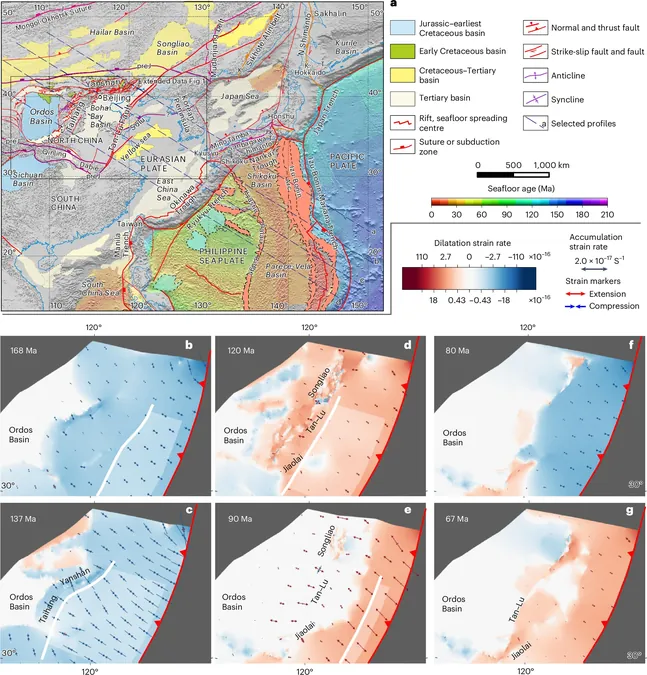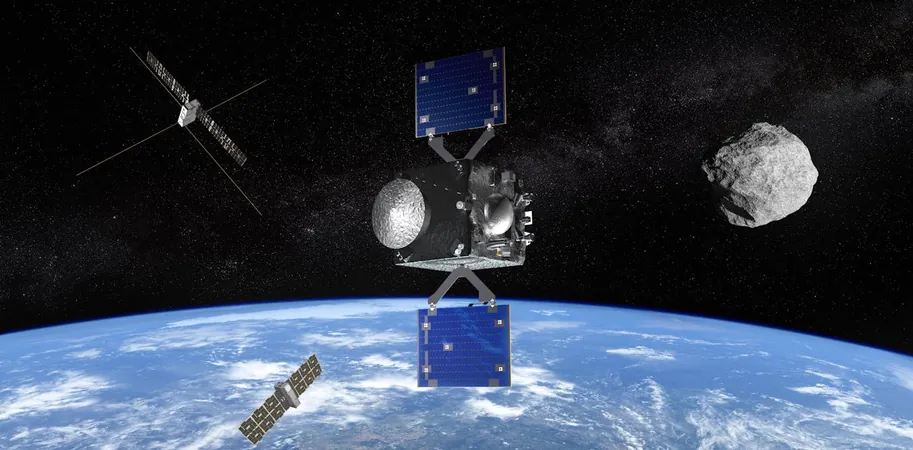
Revolutionary Geodynamic Model Sheds Light on North China's Crustal Deformation!
2024-11-03
Author: Ming
Introduction
Cratons are truly remarkable geological phenomena, representing stable segments of the Earth's continental crust that have withstood the test of time for billions of years. While these ancient formations have endured a variety of geological upheavals, some, like the North China Craton (NCC), are facing a process called decratonization—threatening their integrity and reshaping our understanding of Earth's geology.
Historical Context
During the Mesozoic era, the NCC began experiencing significant decratonization, driven by profound tectonic and geochemical changes at its base, commonly referred to as the "keel." However, the exact mechanisms behind these geological transformations have remained elusive until now.
Groundbreaking Study
In a groundbreaking study published in *Nature Geoscience*, a team of researchers led by Professor Shaofeng Liu from the China University of Geosciences (Beijing) has made significant strides in explaining the intricate processes that resulted in the NCC's deformation. By developing a sophisticated computational model, grounded in detailed geological and geophysical data, the researchers have finally unraveled these complex geological changes.
Key Findings
The model notably examines the subduction of the Izanagi plate beneath the Eurasian plate where the NCC is located. This tectonic activity is identified as a key driver of the observed decratonization. The research team employed various data sources, including earthquake seismicity and basin stratigraphy, to refine their understanding of the potential geometries of subducted plates.
Decratonization Phases
Their findings elucidate three distinct phases of the NCC's decratonization. Initially, the Izanagi plate began subducting beneath the Eurasian plate, but rather than continuing downward, it flattened and started moving horizontally—a phenomenon known as flat-slab subduction. This alteration allowed fluids from the subducted plate to infiltrate the NCC's keel, triggering its destruction and leading to additional geological deformations such as thrusting, craton thickening, and surface uplift.
Rollback Process
In a fascinating twist, researchers noted a subsequent "rollback" process. The subducted plate steepened again and advanced deeper, reaching an interface with the upper and lower mantle. This change catalyzed extensional deformation, responsible for thinning the lithosphere and creating rift basins that resulted in dramatic surface topographic changes.
Large Mantle Wedge
Moreover, the interaction between the advancing subducted slab and the NCC created a sizeable region of upper mantle material dubbed a "large mantle wedge." This area has been associated with convection processes that may incite intense metasomatism, partial melting, and heating at the base of the craton—potentially leading to volcanic activity and an influx of valuable minerals.
Professor Liu's Insights
Professor Liu emphasized the significance of the team's work, stating, "Our innovative mantle-flow model, which incorporates flat-slab and rollback subduction, harmonizes with current geological observations and the known mantle slab structures."
Implications for Resource Management
What’s truly exciting is the potential implications of this research for understanding cratonic life cycles. Cratons are often rich in essential minerals and rare-earth elements critical for technology and energy production. By delving deeper into the processes of decratonization, we may not only enhance our geological understanding but also uncover strategies for sustainable resource management in the future.
Conclusion
As scientists continue to explore these geological phenomena, the revelations about the NCC represent a significant leap in our comprehension of Earth’s complex systems—something that could reshape our technological landscapes and inform more sustainable practices moving forward. Stay tuned for more groundbreaking insights from the world of geology!



 Brasil (PT)
Brasil (PT)
 Canada (EN)
Canada (EN)
 Chile (ES)
Chile (ES)
 España (ES)
España (ES)
 France (FR)
France (FR)
 Hong Kong (EN)
Hong Kong (EN)
 Italia (IT)
Italia (IT)
 日本 (JA)
日本 (JA)
 Magyarország (HU)
Magyarország (HU)
 Norge (NO)
Norge (NO)
 Polska (PL)
Polska (PL)
 Schweiz (DE)
Schweiz (DE)
 Singapore (EN)
Singapore (EN)
 Sverige (SV)
Sverige (SV)
 Suomi (FI)
Suomi (FI)
 Türkiye (TR)
Türkiye (TR)